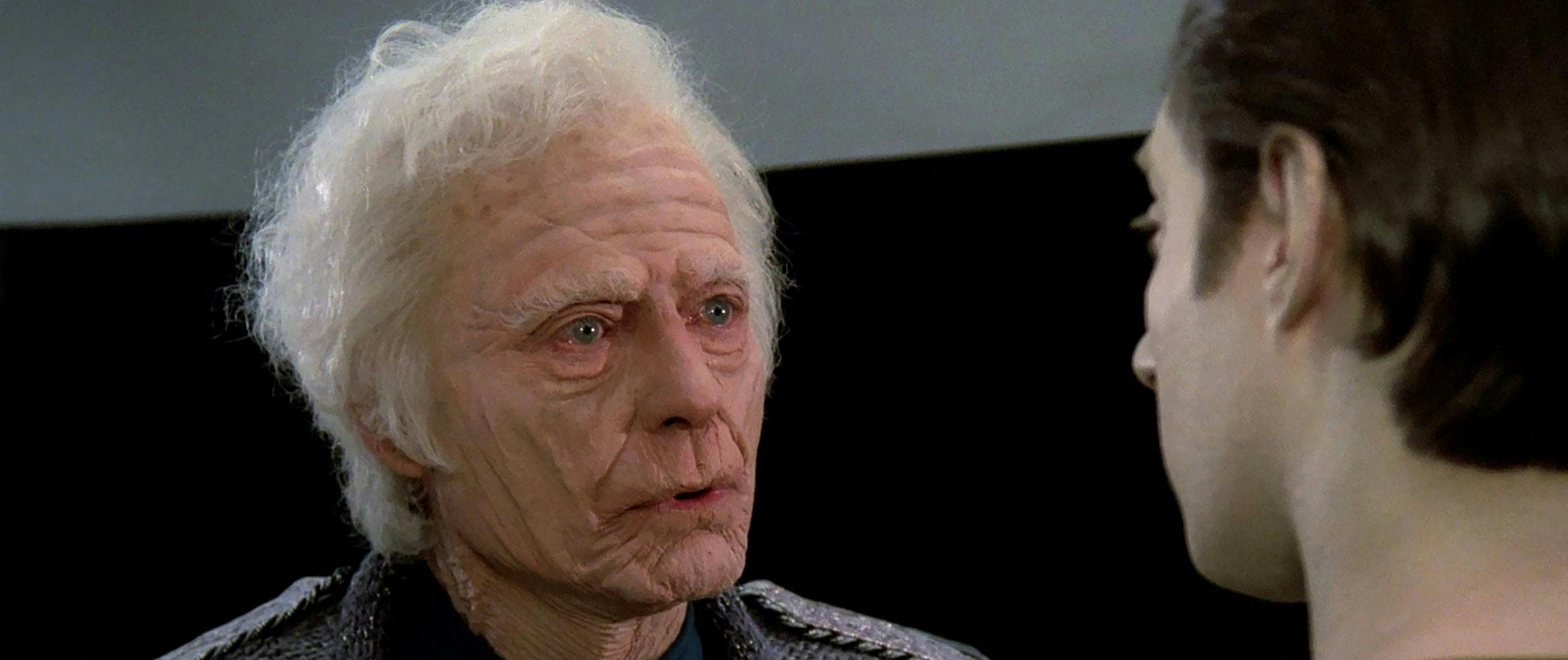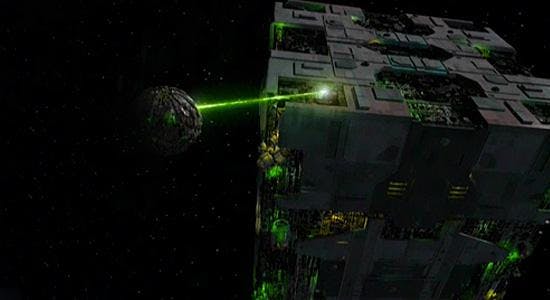Published May 27, 2017
No End In Sight: Unresolved Story Arcs
No End In Sight: Unresolved Story Arcs

The extensive detail of the Star Trek universe lends realism and limitless storytelling potential to every episode. A specific scenario may continue a previous story arc or send our heroes off into new and unknown realms of exploration. The beauty of having so many avenues to pursue brings the unfortunate inevitability that certain intriguing storylines will not be revisited due to time constraints. Excluding elements introduced in series finales, such as the fate of Captain Sisko or the current status of the Borg Collective, what unresolved plot mysteries stand out above the rest?

Fan-favorite Denise Crosby returned to Star Trek: The Next Generation as the half-human, half-Romulan Commander Sela in the episodes "The Mind's Eye," "Redemption," "Redemption II" and "Unification II." Sela's animosity toward the Federation resulted in nefarious attempts to influence the Klingon Civil War, annex Vulcan, and heap guilt upon Captain Picard over the death of Tasha Yar. The calculating commander seemed a likely candidate to appear again, particularly at times pivotal to the future of Romulus. Would the Romulan alliance with the Federation during the Dominion War received Sela's approval? Did Praetor Shinzon consider Sela a friend or a foe? In addition, Sela's unresolved issues with Captain Picard held the seeds for many prospective storylines.

The unique relationship between Worf and Kurn endured many hardships, but the two brothers parted ways in the Star Trek: Deep Space Nine episode "Sons of Mogh." The Klingon Empire seized Kurn's lands and removed him from the High Council due to Worf's refusal to help Chancellor Gowron invade Cardassia. In order to prevent Kurn from allowing someone to take his life, Worf chose to give Dr. Bashir permission to wipe Kurn's memory and alter his facial features. After the surgery, Worf informed Kurn that he was now Rodek from the honorable House of Noggra. While Kurn's new identity provided a sense of closure to the story arc, the question of "Rodek's" fate never received an answer. Did the sons of Mogh ever encounter each other again? When the Klingon Empire and the Federation mended fences, did Worf feel guilty about his decision? Nevertheless, so many stories needed to be told aboard Deep Space 9 that a follow up with Rodek never occurred.

The U.S.S. Voyager crew awakened the remnants of the hostile Vaadwaur race in the Star Trek: Voyager episode "Dragon's Teeth," and it appeared as if the Vaadwaur would become another Delta Quadrant belligerent. Despite escaping their entombment, the Vaadwaur never materialized as a recurring species. Future interactions between the expansionist Vaadwaur and other nearby species, including the Turei, Devore, Borg, and even the Voyager crew, held significant promise for potential episodes. Would the Vaadwaur, rendered nomadic with a depleted population and outdated technology, be able to keep up with the region's current occupants? The battle the dormant race fought against Voyager and the Turei fleet indicated that this dragon's teeth remained sharp.

In the second part of the Voyager episode "Unimatrix Zero," the Borg Resistance formed when drones separated from the Collective and assumed control over many Borg cubes and spheres. The resistance consisted of a variety of species spread throughout the galaxy and represented a unique political entity. Newly freed and with advanced vessels, this amalgamation of races no longer considered themselves Borg, but most found themselves far from home. Did small groups form, or did the entirety of the resistance remain a unified faction? If so, how would they affect the balance of power across the Milky Way? While their primary function focused on tackling the Borg and freeing more drones, there exists no doubt that their interactions inevitably extended to other species, from Romulans and Cardassians to Hirogen and Kazon. Though small in number, the Borg Resistance immediately found itself a galaxy-wide political player.

During the Dominion War, the lack of reinforcements from the Gamma Quadrant forced the Founders to breed new Jem'Hadar warriors in the Alpha Quadrant. The DS9 episode "One Little Ship" introduced the new "Alphas" and the friction with their "Gamma" counterparts. The rift between the Alphas and Gammas never progressed beyond this incident, but the prospect of conflict amongst the Jem'Hadar seemed inevitable. The by-the-book nature of the Gammas clearly clashed with the forward-thinking philosophy of the Alphas, but would their loyalty to the Founders prevent an open dispute? As the ramifications of such dissension never bore another mention, it can be assumed that the Founders either quelled the differences or minimized the leakage of any information about combat between Alphas and Gammas.

An aura of mystery and terror surrounded the Borg from the moment Federation outposts disappeared near Romulan space and the U.S.S. Enterprise-D encountered its first Borg Cube in the TNG episodes "The Neutral Zone" and "Q Who," respectively. Much was revealed about the Borg over the next two decades, but information about their exact origins continues to be elusive. In Star Trek: First Contact, the Borg Queen stated that her species began without synthetic components, while Dr. Crusher noted the assumption that the Borg originated in the Delta Quadrant. Nevertheless, precise information about the Collective's creation and the species that initiated its creation never materialized. In this circumstance, a lack of knowledge may be preferable, as the nature of the unknown adds an element of intrigue to the Borg and evokes a primal fear, much like a cave shrouded in darkness.

TNG re-introduced the popular characters of Leonard "Bones" McCoy and Montgomery "Scotty" Scott from Star Trek: The Original Series in the episodes "Encounter at Farpoint" and "Relics." McCoy, a 137-year-old admiral at the time, saw the Enterprise-D off on her maiden voyage, whereas Captain Picard's crew rescued Captain Scott from a crash site on a Dyson sphere. McCoy soon left to board the U.S.S. Hood, and Scotty procured a shuttlecraft to travel to places unknown. What happened to these two legendary figures? Admiral McCoy's temperament indicated he had no plans of retiring, yet his lack of a uniform made it appear as if he either held a unique position in Starfleet or no longer served in a full-time capacity. Scotty's newfound rejuvenation clearly implied that he hoped to find an active role for himself, and the revelation in Star Trek (2009) that he discovered the equation for transwarp beaming proved his title as a miracle worker held true even in the 24th-century. Yet, while clues do exist, the precise career paths of Admiral McCoy and Captain Scott remain unknown.

The perception of these storylines as unresolved should not be viewed as a criticism, as Star Trek's very nature instills in its writers’ inspiration to go boldly into the unknown, rather than revisit prior story arcs. The fact that so many interesting mysteries perpetuate this fictional universe is a testament to the creative talents behind the episodes. As the popularity of Star Trek continues to increase, the opportunity to discover the answers to some of these questions may arise in the future.
Jay Stobie is a science fiction writer who admits he has a perfectly normal obsession with Star Trek. He can be found on Twitter at @CaptStobie.

